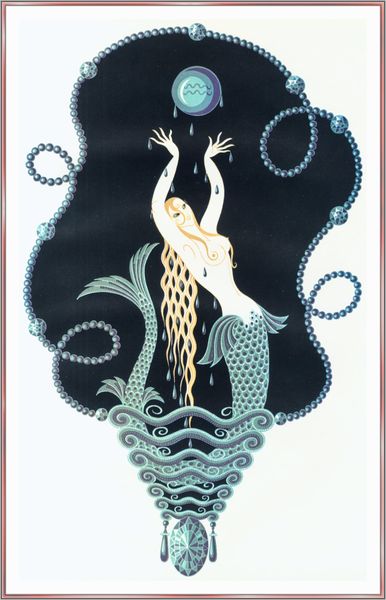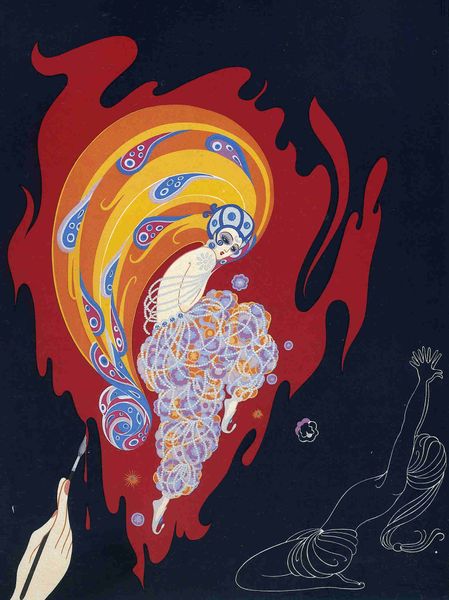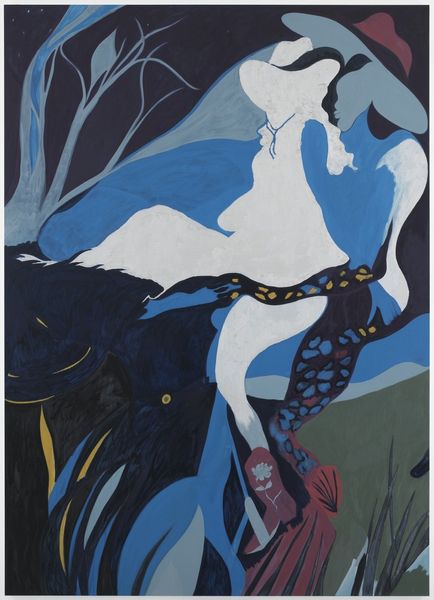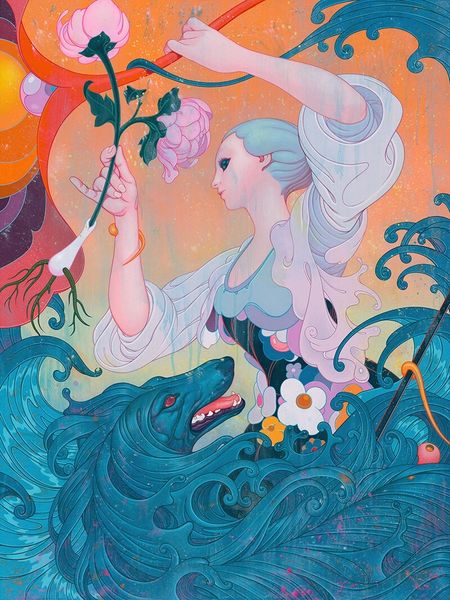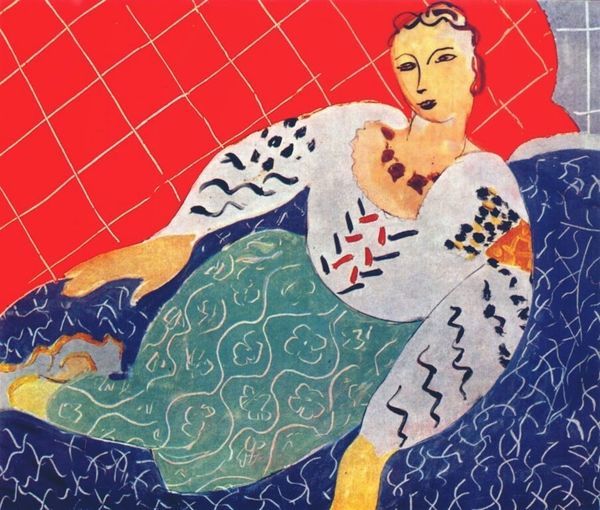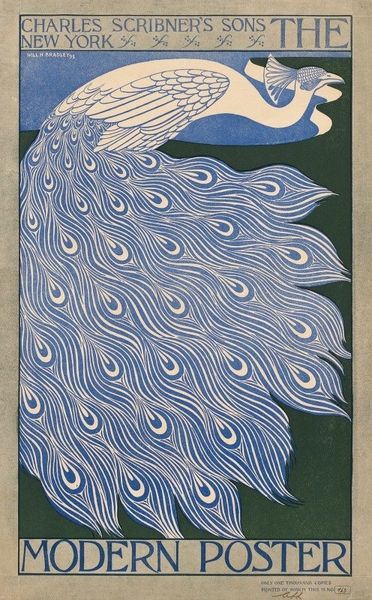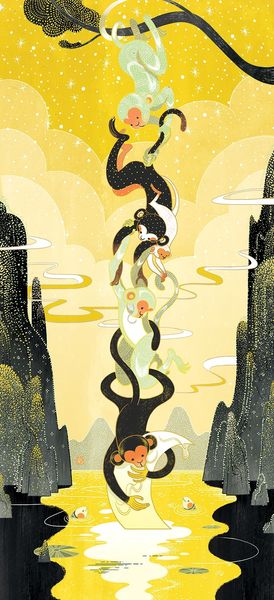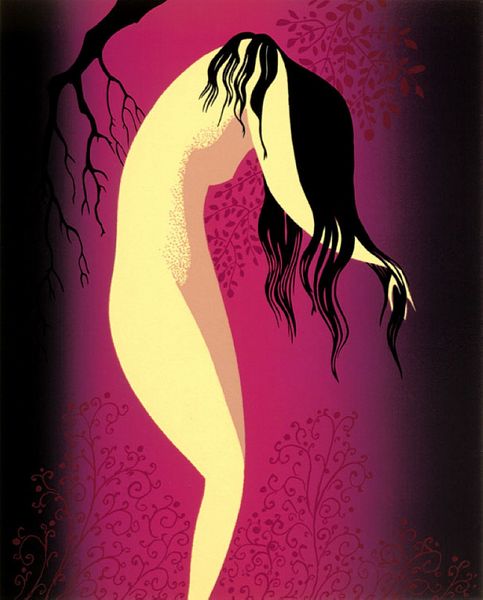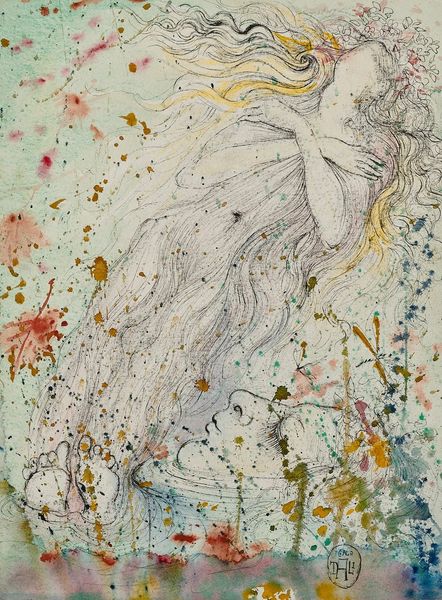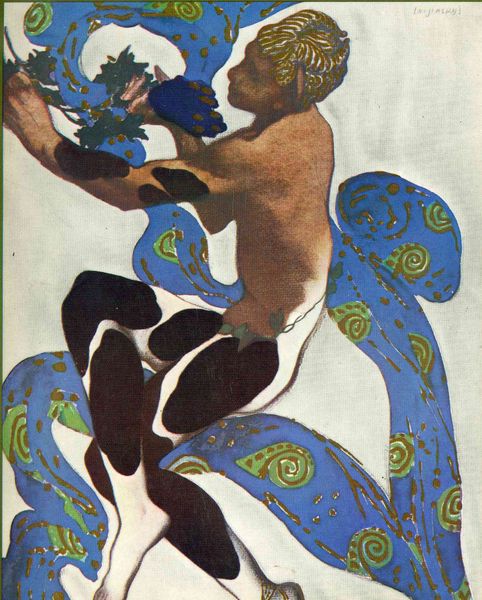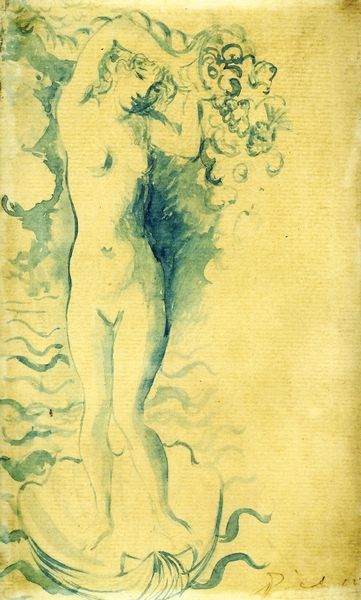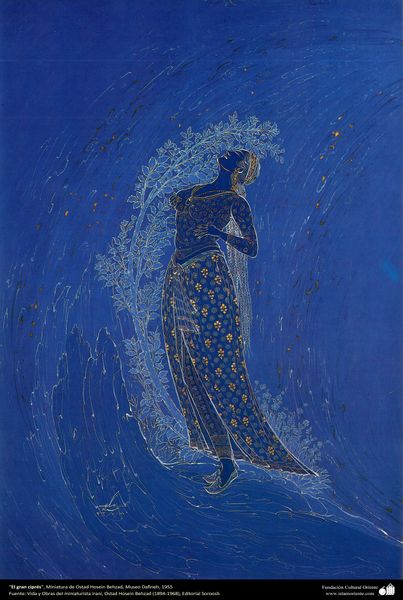
#
portrait
#
art-deco
#
figuration
#
decorative-art
Copyright: Erte,Fair Use
Editor: Here we have "Tuxedo" by Erte. The artwork strikes me as embodying the glitz and glamour of the Art Deco era, what do you make of it? Curator: I see it as a fascinating encapsulation of shifting gender roles and visual culture in the early 20th century. Erte, or Romain de Tirtoff, often explored theatrical and fashionable representations of women. Editor: How so? Curator: Look at the dress, the tuxedo reference. The binary idea of clothing is intentionally shattered to liberate the body of gender constrictions through fashion. We can read this artwork through the lens of flapper culture and its rejection of Victorian ideals and emerging queer aesthetics. Do you notice how his designs often placed women in powerful, almost androgynous roles? Editor: I hadn’t considered the gender implications so deeply, but now that you point it out, it’s pretty clear. So it's more than just aesthetics? Curator: Exactly! It becomes a political statement, reflecting and contributing to the era's discourses on women's liberation, fashion as rebellion, and challenging the rigid social norms around identity. His work was commercial, of course, but don't let that distract you. Editor: So "Tuxedo" functions on multiple layers then - it’s glamorous but also subversive. I’m learning there's much more here than meets the eye! Curator: Indeed, and questioning the artist's intentions while acknowledging art's social context allows us to consider more about who we are.
Comments
No comments
Be the first to comment and join the conversation on the ultimate creative platform.
